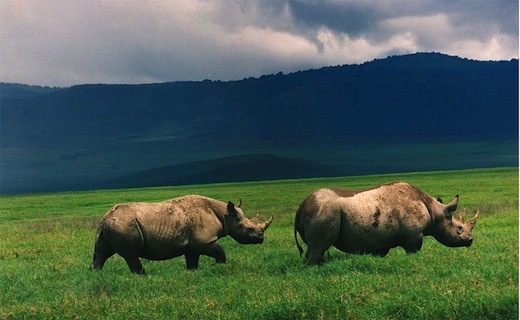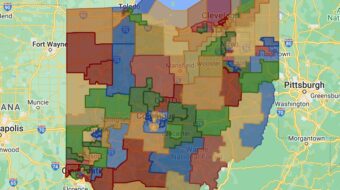
People’s World’s Blake Deppe tells us the sad story of the extinction of the western black rhinoceros at the hands of humans, who erroneously believe that rhino horn is a medical miracle cure. The good news is that the black rhino (not to be confused with the western black rhino, a distinct subspecies) survives in other parts of its range, though, like the other four species of rhinos in existence today (the “white” rhino in Africa, and the Indian, Javan and Sumatran rhinos in Asia), it is highly endangered.
Readers may be interested to know that a female black rhinoceros played an important part in the struggle to clean up corrupt elections in São Paulo, Brazil, in 1958.
The rhino, named Cacareco, had been transferred to the São Paulo zoo from one in Rio de Janeiro the year before, so had been in the news. At only five years of age, she was full grown and said to be friendly and well-behaved, for a rhinoceros. A photo shows children petting her through a fence, a kind of interaction not really recommended with rhinos wild or tame.
They tend to be grumpy creatures; an early childhood experience on my part was that of being soaked from head to toe by the urine of a black rhinoceros in the Pretoria Zoo in South Africa, from a distance of about 10 feet. The urine smelled vile, but I was more upset by the rude laughter from the other people present.
[Zoological-linguistic note: White rhinos (Ceratotherium cimum) and black rhinos (Diceros bicornis) are really about the same color, namely gray. The “white” rhino got its name because it has a “wide” mouth for eating grass, pronounced, in Dutch and Afrikaans, like English “white,” while the “black” one has a sort of pointed upper lip for nibbling the shrubbery. In other words, the black rhino is only called such because it is not “white.” This makes me suspect that these names were invented by white people in South Africa, where, in the bad old days, such a language mix-up could have had political implications, such as separate wild game reserves for the white and black species.]
But I digress; back to São Paulo in 1958. It happened that there were municipal elections just at that point, and the public was more than usually turned off by the venality and opportunism of the candidates. So someone got the idea of running Cacareco the rhinoceros as a candidate.
Electoral officials refused to recognize the candidacy, perhaps because Cacareco was only five years old at the time. Nevertheless, the gentle beast got more votes than any other candidate, at around 100,000.
This raucous insult to the political establishment so annoyed the latter that they sent Cacareco back to the Rio de Janeiro zoo, where she died only a few years later.
So inspiring was Cacareco’s feat that satirical knaves in Canada imitated it with another black rhinoceros, Cornelius the First, who ran in several Canadian elections. I don’t know if Cornelius is still alive, but he fathered a son in 2003, an important contribution to the survival of his endangered species.
In U.S. political jargon, a RINO is a “Republican in Name Only” – that is, one who is not absolutely stark raving mad.
Photo: Black rhinos roam in Tanzania’s Ngorongoro Crater. (CC)












Comments